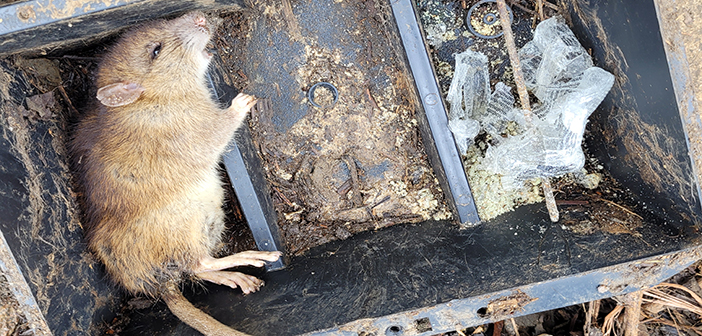Damien Lane, a professional pest controller from DJL Pest Solutions, was called to a rural pig farm following reports of a well-established population of rodents that had grown out of control.
Here, we explore how Damien used the award-winning cholecalciferol rodenticide, Selontra to tackle the infestation.
The Challenge
When Damien first arrived at the pig farm, he assessed the location, finding evidence of heavy rodent traffic, droppings, smear marks and a large number of burrows pointing towards a very high, well-established rodent population.
“The location of the farm, surrounded by fields and hedges alongside the barns and readily available food sources, had provided the rats with the perfect location,” commented Damien. “Unfortunately, the previous poor use of anticoagulants had allowed the infestation to grow out of control, as it was an area of known rodenticide resistance, which meant that the rodents had begun to effect produce and contaminate food sources.”
Following his initial assessment, Damien created a speed baiting plan to eliminate the infestation as quickly as possible, setting up a further 50 new bait boxes five to ten metres apart around the site, alongside the existing boxes to increase the rodent’s exposure to Selontra across the whole farm.
The Result
In the first two days after placing the bait, Damien noticed 80% consumption of Selontra from the existing bait boxes and minimal uptake from the newer boxes, showcasing typical neophobic behaviour from the rats. Another visit to the site a day later showed there had been 80% consumption from the newly installed boxes.
“The palatability of the product was demonstrated in the speed at which the neophobia was overcome to consume the blocks of Selontra from the new rat boxes that were installed. The site was rife with various food sources including maize, pig feed and grain but the rodents opted for the Selontra.”
After replenishing the boxes around the site with fresh bait, Damien returned on day 7 to find a lower rate of bait consumption compared to previous visits, with the farmer reporting fewer sightings and evidence of rodent activity across the farm, suggesting that the infestation was beginning to reduce in size.
“By the end of the treatment, there were no fresh signs of rodent activity, and there had only been around 20% of the bait consumed. With no evidence of rodent activity or sightings, it was concluded that the infestation was controlled to the customer’s satisfaction.”
“A speed baiting plan is labour intensive, however, it is effective in achieving results quickly and efficiently. Compared to the many formulations I have used over my 20 years in the industry, the palatability, consumption and success rates of Selontra far exceeded any expectations I had.”


